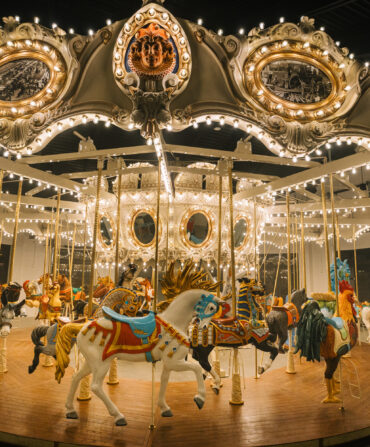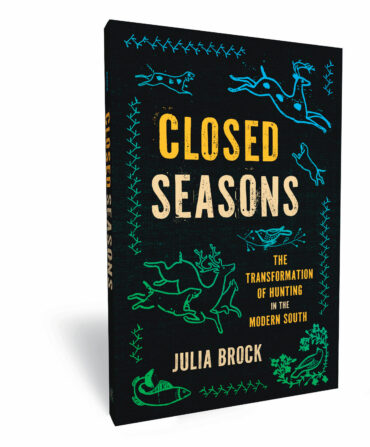He thought it was over. It was Sunday, March 7, 1965, and a voting-rights march from Selma to Montgomery had barely begun when Alabama state troopers charged a line of nonviolent demonstrators led by the twenty-five-year-old John Lewis. Trapped between asphalt and his uniformed attackers at the foot of the Edmund Pettus Bridge, inhaling tear gas and reeling from two billy-club blows to his head, Lewis felt everything dimming. He could hear screams and racial slurs and the clop-clop-clop of the troopers’ horses. His skull fractured, his vision blurred, Lewis believed the end had come. “People are going to die here,” he said to himself. “I’m going to die here.” Yet for Lewis there was, strangely, no sense of panic, no gasping, no thrashing, no fear: He was at peace.
The world around him on that day, though, was at war, and the television cameras were whirring. Images of the Alabama troopers’ attack on Lewis and his fellow marchers ran that evening; ABC broke into the broadcast premiere of Judgment at Nuremberg to show the footage. What had begun as an ordinary day in a small Southern town was soon to be known as Bloody Sunday, and the scene at the bridge became that rarest of things: a crossroads in the long story of civilization. “At times, history and fate meet at a single time in a single place to shape a turning point in man’s unending search for freedom,” President Lyndon B. Johnson told the Congress. “So it was at Lexington and Concord. So it was a century ago at Appomattox. So it was last week in Selma, Alabama.” Within months came the Voting Rights Act of 1965, a landmark victory in the decades-long battle against Jim Crow.
Today, fifty years on, John Lewis, who is beginning his fifteenth term representing Georgia’s fifth congressional district in the U.S. House of Representatives, is older and heavier, buthe still embodies the spirit of Bloody Sunday: His was—is—a vision of nonviolent social change that has more in common with the martyrs of old than with the politics of a given hour. “At the moment when I was hit on the bridge and began to fall,” Lewis recalls, “I really thought it was my last protest, my last march. I thought I saw death, and I thought, ‘It’s okay, it’s all right—I am doing what I am supposed to do.’” Which was to dramatize the injustice of segregation and to call white America to redemption—not through violent confrontation but through courageous witness.

Photo: Audra Melton
Living History
Representative Lewis holds a photograph of his attack on Bloody Sunday.
Born in 1940 to sharecropper parents, Lewis overcame a childhood stutter by preaching to chickens on the family farm in Pike County, Alabama. After the Montgomery bus boycott catapulted Martin Luther King, Jr., to fame, Lewis sought out the emerging civil-rights icon, became chairman of the Student Nonviolent Coordinating Committee, and began a fabled life in the movement. Lewis was beaten and arrested across the South, including on the epochal Freedom Rides; spoke at the March on Washington in 1963; and was leading the Selma-to-Montgomery voting-rights effort when he and his colleague Hosea Williams crested the Pettus Bridge and spotted a line of troopers on that March Sunday.
Lewis had prepared to be arrested. In his backpack he carried two books, an apple and an orange, and a toothbrush and toothpaste. Then came the order: “Troopers, advance!” He has always remembered the enormity, the totality, of the reaction of his attackers: “The troopers and possemen swept forward as one, like a human wave, a blur of blue shirts and billy clubs and bullwhips,” Lewis wrote in his affecting memoir of the movement, Walking with the Wind. “We had no chance to turn and retreat.” The pain was to be endured; there was no help for it.
Lewis made it back to Brown Chapel, the Selma church that served as the headquarters for the march, and was eventually persuaded to go to a local emergency room. (He still remembers the ambient smell of tear gas from the clothes of the victims seeking medical attention.) As he recuperated from his injuries, he sat and watched President Johnson’s clarion call for voting-rights legislation.
For Lewis, the civil-rights struggle always centered around whether the best of the Southern soul (the grace and the love, the godliness and the generosity) could finally win out over the worst (the racism and the hatred, the fear and the cruelty). In the end, after the marches and the beatings and the riots, the light has largely triumphed over the dark. “I always felt growing up that in the South there was evil but also good—so much good,” Lewis says. “We are still in the process of becoming. I am very, very hopeful about the American South—I believe that we will lead America to what Dr. King called ‘the beloved community.’ I travel all the time, but when I come back to the South, I see such progress. In a real sense a great deal of the South has been redeemed. People feel freer, more complete, more whole, because of what happened in the movement.”
He knows, too, that the movement is inexorably receding into myth; the battles of a half-century ago can seem as distant as Agincourt or Antietam. He is the last of the “Big Six” civil-rights leaders—having survived King, James Farmer, Whitney Young, A. Philip Randolph, and Roy Wilkins. The work of the final chapter of Lewis’s life is partly about the preservation of the fruits of the work of the first. There are pilgrimages to Selma, Montgomery, and Birmingham, the constant commemorations, and, day in and day out, the simple yet profound art of being John Lewis, a man whose physical scars mirror the wars of a nation. Quietly charismatic, he is charming about his effect on others. “People come up to me in airports, they walk into the office, and they say, ‘I’m going to cry; I’m going to pass out.’ And I say, ‘Please don’t pass out; I’m not a doctor.’”

Photo: ©Steve Schapiro/Corbis
John Lewis (far right) with Dr. Martin Luther King, Jr., during one of the historic Selma-to-Montgomery marches in 1965.
He is, however, a preacher still, one whose voice, trained so long ago in the farmyard, continues to captivate. “The march of 1965 injected something very special into the soul and the heart and the veins of America,” Lewis says. “It said, in effect, that we must humanize our social and political and economic structure. When people saw what happened on that bridge, there was a sense of revulsion all over America.”
Revulsion, then redemption: “In the final analysis, we are one people, one family, one house—not just the house of black and white, but the house of the South, the house of America,” Lewis says. “We can move ahead, we can move forward, we can create a multiracial community, a truly democratic society. I think we’re on our way there. There may be some setbacks. But we are going to get there. We have to be hopeful. Never give up, never give in, keep moving on.” And so onward we march, blessed that John Lewis can still walk point.








